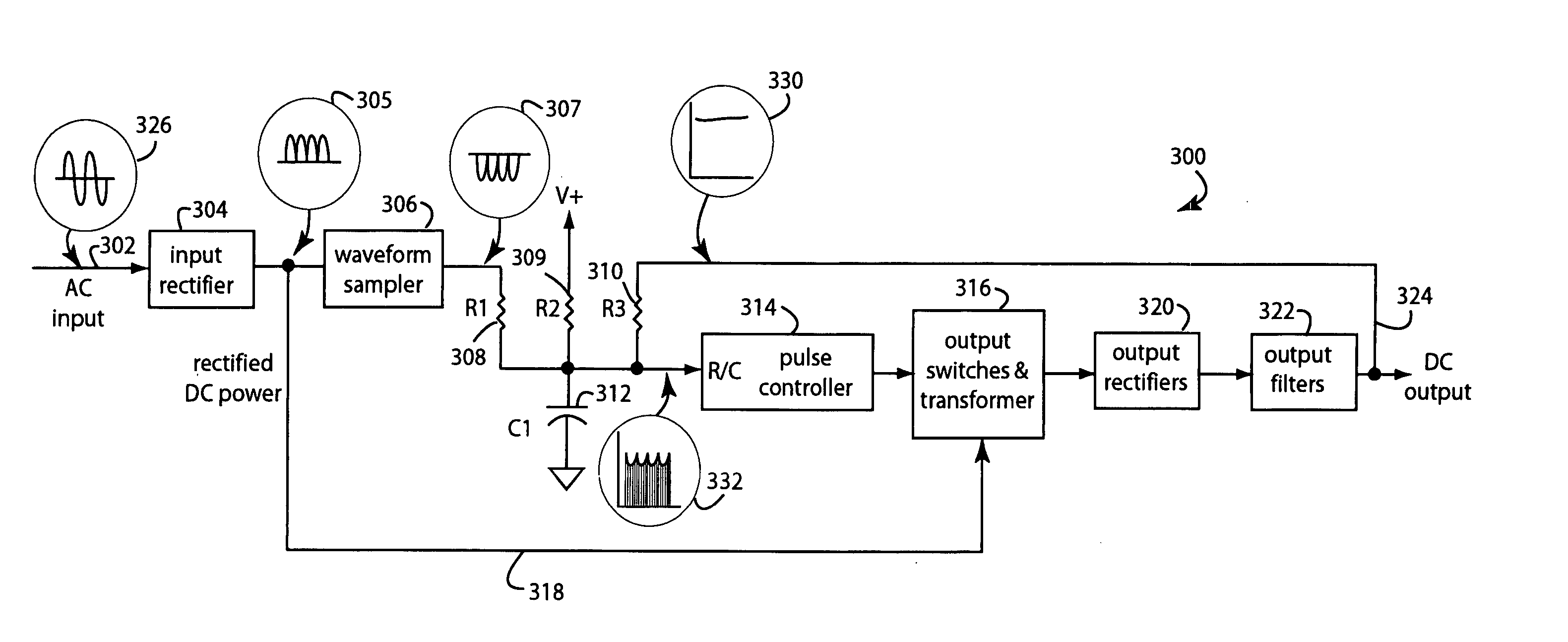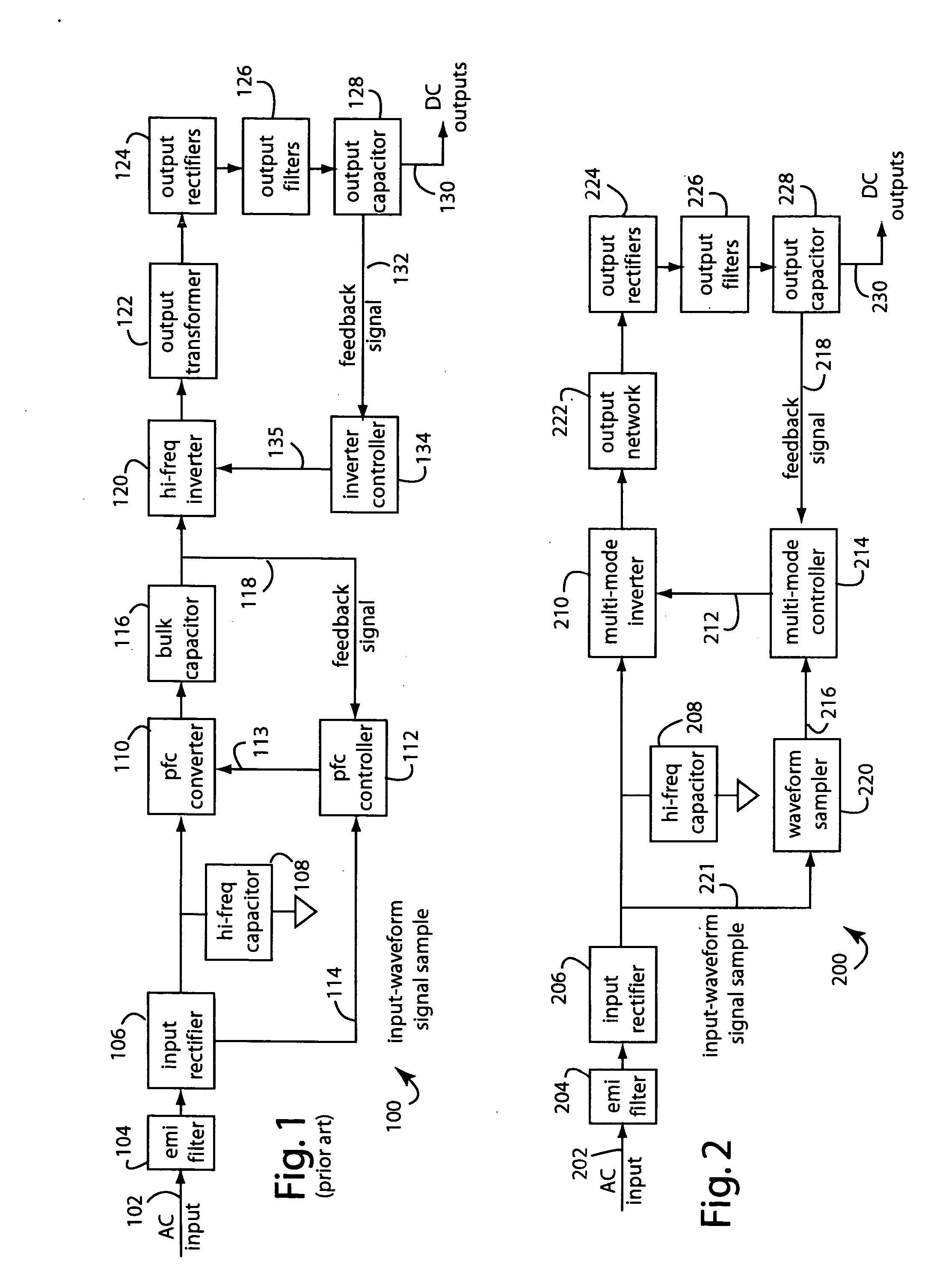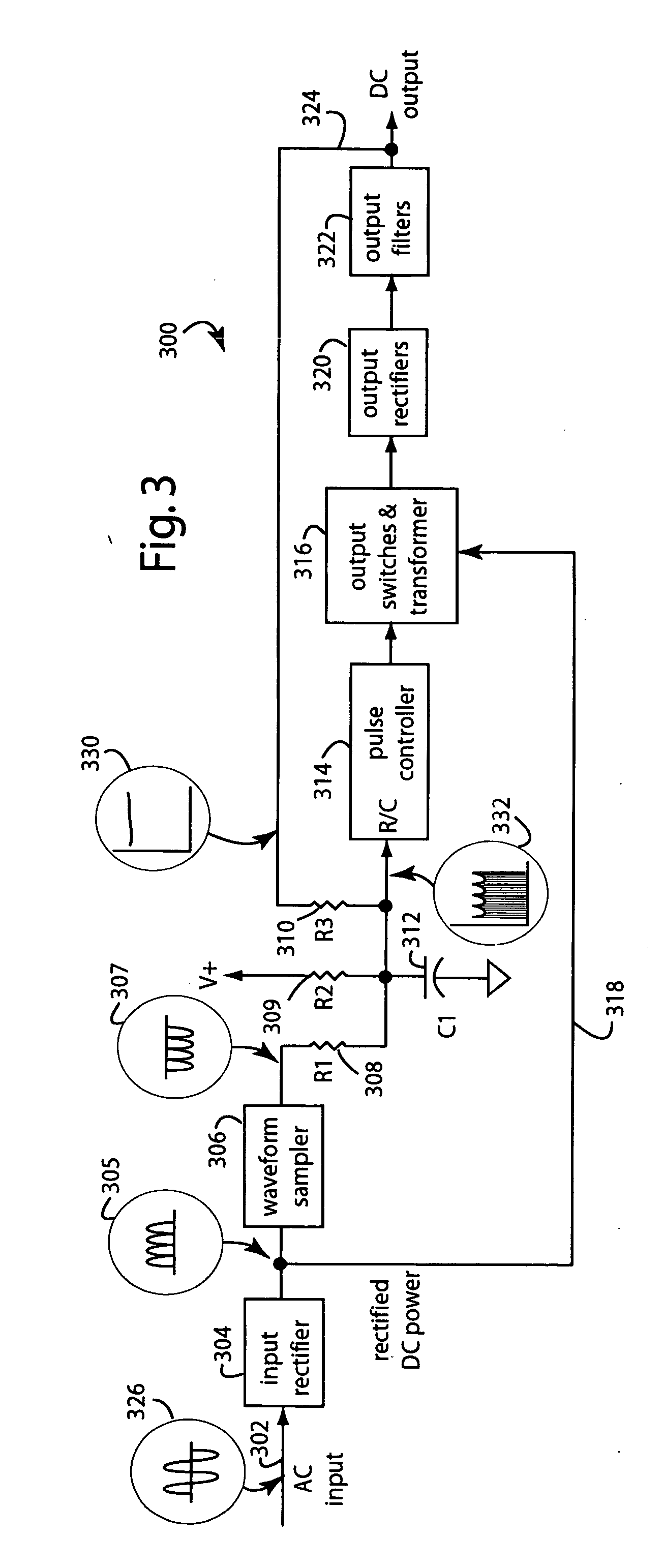Single-stage power converter with high power factor
a power converter and single-stage technology, applied in power conversion systems, climate sustainability, energy industry, etc., can solve the problems of less than 100% efficiency of each stage, and achieve the effects of high power factor, good regulation, and high efficiency
- Summary
- Abstract
- Description
- Claims
- Application Information
AI Technical Summary
Benefits of technology
Problems solved by technology
Method used
Image
Examples
Embodiment Construction
[0017]FIG. 2 represents a power supply embodiment of the present invention, and is referred to herein by the general reference numeral 200. An AC input power 202 is brought in through an electro-magnetic interference (EMI) filter 204 and converted to DC by an input rectifier 206. A high-frequency capacitor 208 filters the raw DC for a multi-mode inverter 210. A voltage-controlled frequency generator can be used to implement multi-mode inverter 210. A single controller signal 212 from a multi-mode controller 214 simultaneously provides for output-voltage regulation and input power-factor correction. This single controller signal 212 is synthesized from both an input sample 216 and an output feedback signal 218. A waveform function 220 operates as a sampler and conditions a signal 221 received from the input rectifier 206. The inverter 210 drives an output network 222, e.g., in a switched-mode type of configuration involving switches to chop the incoming DC, step those through a trans...
PUM
 Login to View More
Login to View More Abstract
Description
Claims
Application Information
 Login to View More
Login to View More - R&D
- Intellectual Property
- Life Sciences
- Materials
- Tech Scout
- Unparalleled Data Quality
- Higher Quality Content
- 60% Fewer Hallucinations
Browse by: Latest US Patents, China's latest patents, Technical Efficacy Thesaurus, Application Domain, Technology Topic, Popular Technical Reports.
© 2025 PatSnap. All rights reserved.Legal|Privacy policy|Modern Slavery Act Transparency Statement|Sitemap|About US| Contact US: help@patsnap.com



